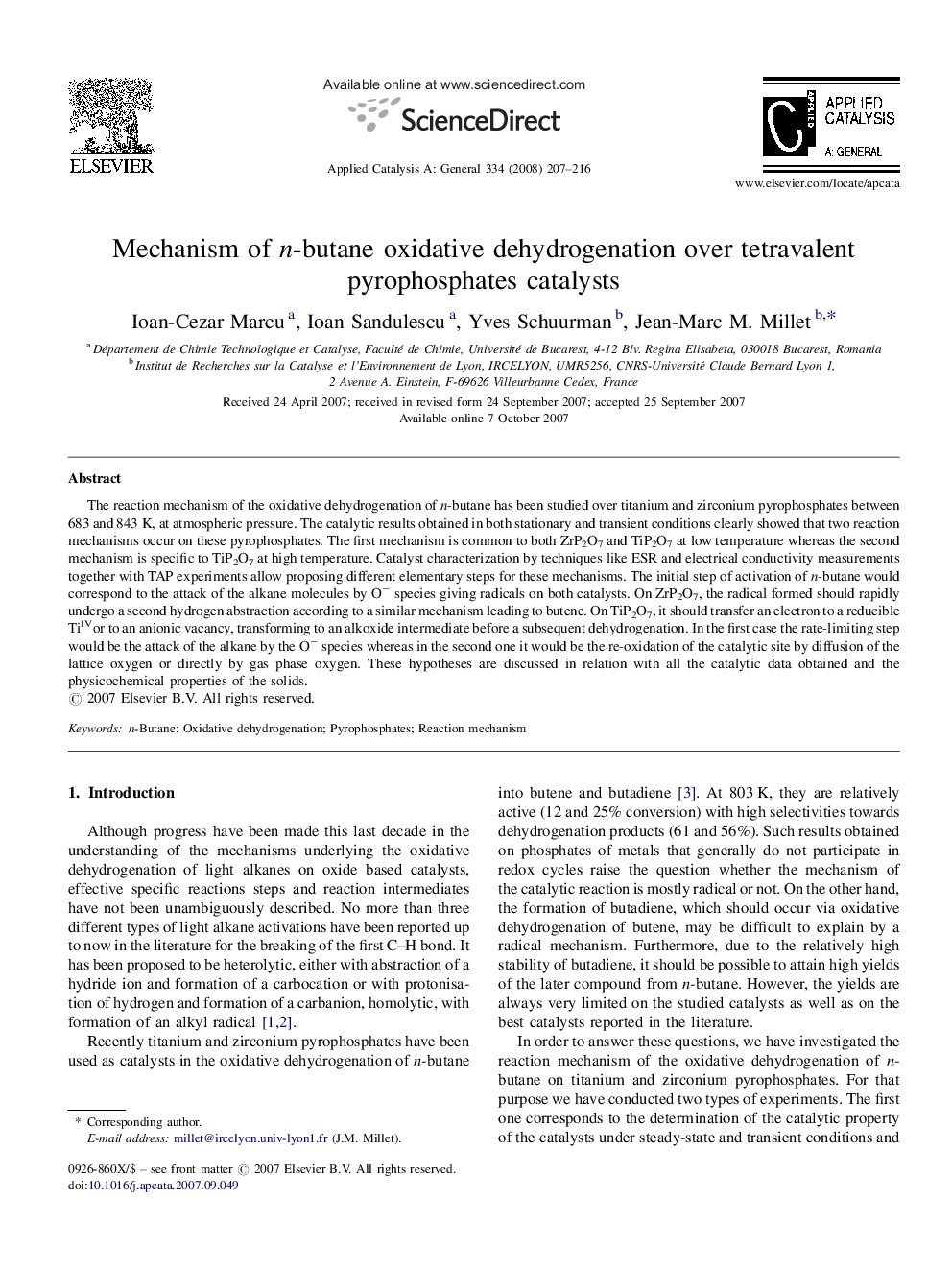| Article ID | Journal | Published Year | Pages | File Type |
|---|---|---|---|---|
| 43209 | Applied Catalysis A: General | 2008 | 10 Pages |
The reaction mechanism of the oxidative dehydrogenation of n-butane has been studied over titanium and zirconium pyrophosphates between 683 and 843 K, at atmospheric pressure. The catalytic results obtained in both stationary and transient conditions clearly showed that two reaction mechanisms occur on these pyrophosphates. The first mechanism is common to both ZrP2O7 and TiP2O7 at low temperature whereas the second mechanism is specific to TiP2O7 at high temperature. Catalyst characterization by techniques like ESR and electrical conductivity measurements together with TAP experiments allow proposing different elementary steps for these mechanisms. The initial step of activation of n-butane would correspond to the attack of the alkane molecules by O− species giving radicals on both catalysts. On ZrP2O7, the radical formed should rapidly undergo a second hydrogen abstraction according to a similar mechanism leading to butene. On TiP2O7, it should transfer an electron to a reducible TiIV or to an anionic vacancy, transforming to an alkoxide intermediate before a subsequent dehydrogenation. In the first case the rate-limiting step would be the attack of the alkane by the O− species whereas in the second one it would be the re-oxidation of the catalytic site by diffusion of the lattice oxygen or directly by gas phase oxygen. These hypotheses are discussed in relation with all the catalytic data obtained and the physicochemical properties of the solids.
Graphical abstractThe reaction mechanism of the oxidative dehydrogenation of n-butane has been studied over titanium and zirconium pyrophosphates between 683 and 843 K. Two reaction mechanisms are involved, one common to ZrP2O7 and TiP2O7 at low temperature and a second specific to TiP2O7 at high temperature. The initial step of these mechanisms would correspond to the attack of the alkane molecules by O− species.Figure optionsDownload full-size imageDownload as PowerPoint slide
